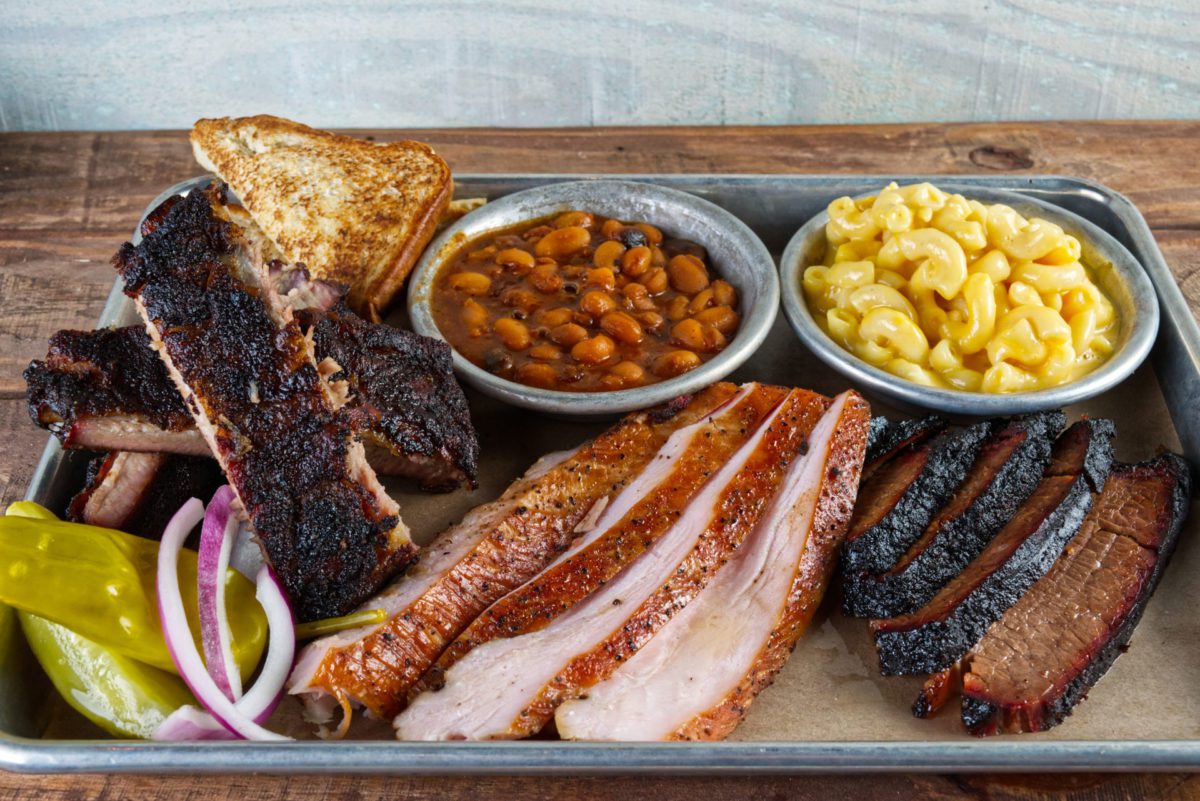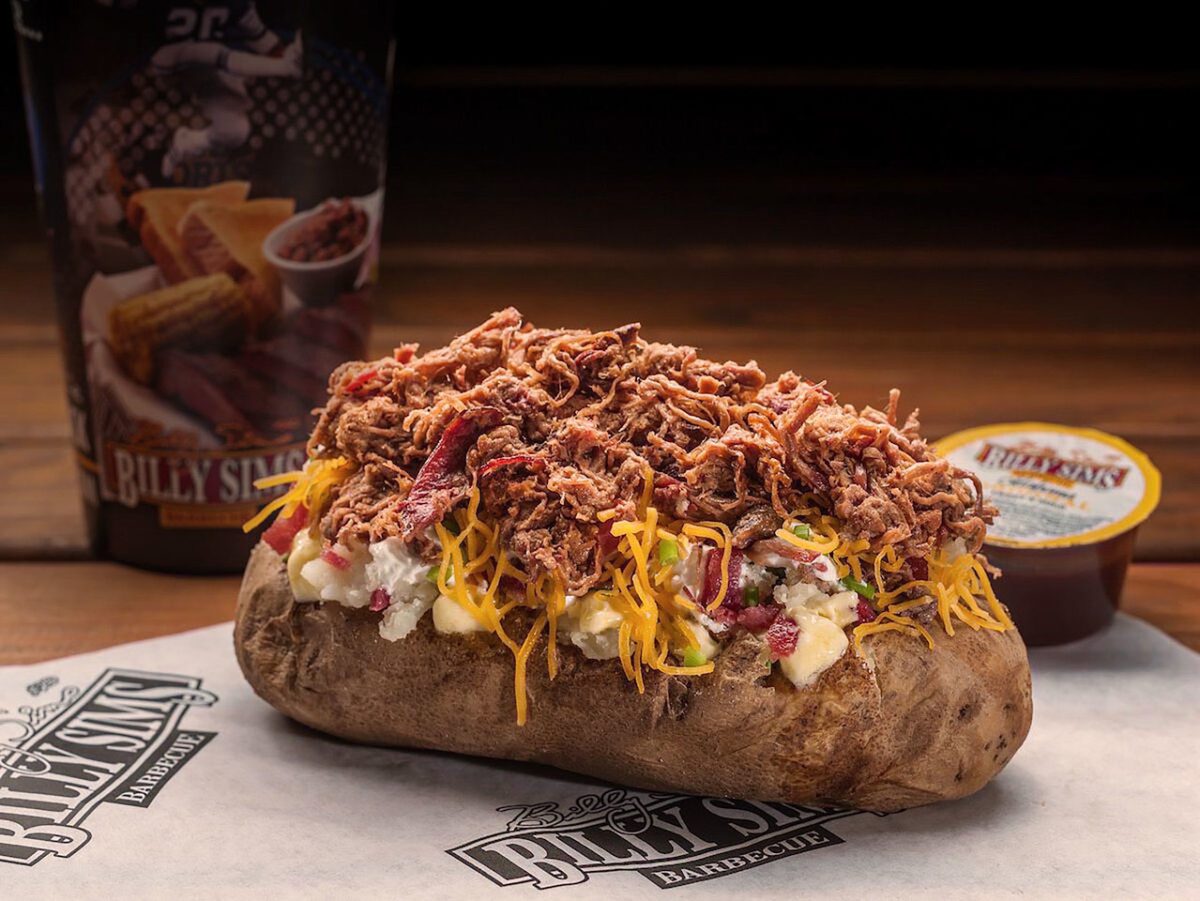Getting Started
Growing one’s skills at the grill is attainable through trial and error – and other resources such as online classes from the major barbecue brands.
Interested grillers can check out YouTube tutorials to learn how to get started on a gas grill, the differences between heat sources, how to set up or build various items and just about everything in between.
Locally, some restaurants in both OKC and Tulsa offer periodic classes – a quick internet search will yield helpful results.
For a formal opportunity to learn on a regular basis, Forge Barbecue Co. formed Tulsa Barbecue School in 2017 to teach the finer points of handcrafted, wood-fired barbecue. The curriculum is backed by expert grillers, barbecue societies and a network of pitmasters.
Tech at the Grill
There is an ever-evolving arsenal of grilling gadgets and gizmos, like precision cookers, high-powered portable griddles and one-touch grill cleaning systems for those looking to up the ante on their home set-ups.
True-infrared tech is relatively new and addresses the issue of food dryness as a result of traditional gas and charcoal. This technology cooks with heat waves as opposed to heated air. Temperatures can get as high as 1,200 degrees Fahrenheit – much hotter and more efficient than the standard technique.
The Meater App gives cook time estimates and helps ensure you don’t over- or undercook different meats going on the grill simultaneously.
Used by professionals for decades, precision cookers work by circulating heated water, cooking food to the exact set temperature needed for grilled perfection.
Whether camping, tailgating or cooking in the backyard, high powered portable griddles are versatile, making it easy to cook up anything a full-sized grill can. With its flat surface, a griddle can also cook bacon, eggs, pancakes or any other goodie you might want, and some models come with both a grill and griddle surface combo.
BBQ Trends
Hot summers paired with abundant beef and other grilled goods are big business, a trend reflected worldwide as annual market revenue for grills and roasters ranges from $4 to $7 billion.
As to style, fusion barbecue – a culinary blend – is rising at many new up and coming restaurants nationwide. With fusion ‘cue, chefs are mixing a variety of cooking styles and cuisines together.
For some pitmasters, trends are eschewed in favor of a secret and curated barbecue alchemy. Chuck Gawey, owner of Albert G’s Bar-B-Q in the Tulsa area, focuses on consistency and proven methods.
Matt Thompson, vice president of operations for RibCrib, has noticed a few trends sticking, and his team has subsequently integrated them into the menu.
“We notice that a lot of pitmasters – especially the younger ones – are really pushing the idea of what barbecue is in the southwest United States, ” he says. “We’re seeing a lot of experimentation of craft barbecue menus, and it gets us taking chances – like when we introduced Redneck Nachos, [which are] potato chips fried in-house, then topped with pulled pork, a black bean and corn medley, queso, a swirl of barbecue sauce and pickled jalapeños.
“It’s not traditional, but we brought it out and people really like them. So we’re asking: ‘What does barbecue look like in the 21st century?’ We’re keenly aware of our history and what we learned in competitions years ago, and now are seeing exciting things we never thought about until now.”
Trends include:
- A Spanish grilling method, la plancha is performed on a slab of slate over flames, giving effortless heat control and an absence of flare-ups, along with the ability to cook evenly, as the stone acts as a griddle.
- Vegetarian and plant-based BBQ options include elote, which is corn roasted on the grill, often brushed with vegan mayonnaise and sprinkled with plant-based cotija cheese and chili powder. Other veggie
favorites include Idaho potatoes sliced into wedges; mushroom burgers marinated overnight; and the classic plant-based hot dogs and veggie burgers. - Another favorite is to skewer veggies into kebabs, brushing them with oil and seasoning and serving with barbecue sauce. Choices include tofu steak, cauliflower steak and seitan. On the naturally sweet side, grilling turns fruit into a luscious treat. Try jackfruit, peaches and pineapple.
The Perfect Pairings
Using sauces and spices to zest up your BBQ is a creative expression in cookery, and Oklahoma is home to a variety of concoctions including Smokmaolma Barbecue, Tumblin 5 BBQ, Brushy Creek Barbecue, D’Lynn’s Family BBQ Sauce, Antler’s BBQ Sauce, Knotty Pine Barbecue and so many more. The website madeinoklahoma.net is a great resource for those looking to shop local.
Some seasonings pair best with specific meats. Chicken goes well with dill weed, rosemary and anything citrus – including the peel and juices, especially in a marinade.
For turkey, try the warmth of cumin or the classic pairing of sage. For an Asian flair, turkey blends well with star anise.
Goose and duck are enhanced by rosemary, and experts say this herb balances the intensity of the fatty poultry. Red pepper flakes and cinnamon increase texture and tenderness.
Beef goes well with yellow mustard powder, onion, garlic and basil.
Try the classic flavor profile of lamb with mint or other options like curries and turmeric for a depth of richness.
Sage enhances pork and turkey. Other optimal pork pairings include juniper berries for a tart complement to pork’s sweetness, or caraway with its licorice flourish.
Grilled fish and seafood benefit from a citrus zing with lemongrass, or try oregano with freshwater fish.
International Barbecue Styles
It’s not just Oklahoma, nor the U.S. at large, that’s enamored by the nuances of barbecue. Varied grilling styles can be found throughout the world.
Wandering the streets of Jerusalem, you’ll find shipudim, a ubiquitous lamb meat kebab. Meat on a stick is a popular street food in Ghana, and is known as chichinga; it typically comes with beef or lamb rubbed with suya – a mix of ground spices, peanuts and hot peppers.
In the Philippines, chicken or pork inihaw is often, but not always, on bamboo skewers and the word is a general Tagalog term meaning ‘grilled’ or ‘roasted.’ Pickled kimchi is South Korea’s most famous culinary export … followed closely by Korean barbecue, often cooked at the table and typically flavored by toasted sesame oil, the sweet heat of gochuijang (chili paste) and savory doenjang soybean paste.
Yakitori is Japan’s beloved barbecue offering, with skewered and grilled chicken parts including cartilage, liver and thigh, marinated in sake, ginger, soy sauce, garlic, mirin and often a touch of brown sugar.
South African barbecue is braai – usually pork, lamb or beef cooked over a wood grill.
Ask the Experts
Safety at the grill is paramount. Experts weigh in on some do’s and don’ts.
Do:
- Keep pets and children at least three feet away from the grill.
- Keep a clean grill, free of fat buildup. Scrape it clean between uses.
- Place charcoal and propane grills outdoors, a safe distance from structures, railings and eaves.
- Ensure a gas grill is open before lighting.
- Check the gas tank hose for leaks before using a propane grill for the first time each year by applying a light soap and water solution to the hose.
- Call the fire department and distance yourself from the grill if a fire becomes unmanageable or you smell a strong gas odor.
Don’t:
- Add any flammable liquid to an already started fire.
- Place starter fluid close to heat sources.
- Spray water on fire flare-ups.
- Skewer meats together that cook at different paces.
- Leave the grill unattended.
- Forgo a meat thermometer.
- Cross-contaminate or place cooked meat on a plate that also holds raw meat.
- Wear loose clothing or anything that could catch fire easily.
Diner Favorites
The grill is ready and the smoker’s at the perfect temp. So which meat – and which cuts – are your next decisions.
“Ribs and brisket are mainstay meats at Earl’s Rib Palace,” says Richard Rea, the restaurant’s operating partner. “They are the highest-quality cuts of meat and therefore get the prime real estate in our smokers. Coming in at a close third is our smoked bologna – less traditional for sure, but a tasty slice of meat when you’re looking to get off the beaten BBQ path.”
RibCrib’s Thompson weighs in: “We like St. Louis style ribs because they’re very meaty and flavorful. Baby backs are leaner and spareribs are untrimmed and much larger, and so we feel like St. Louis style has a ton of flavor and is easy to eat. I also think we do a great job with our pork butt, as it’s a juicy, tender meat that’s very flexible, and you can do a lot with it once done smoking. One of our most popular meats is smoked chicken breast. We slather, season and smoke skinless chicken, and folks love it.”
Whitney Beavers with Legendary Q Brands, owner of Billy Sims Barbecue, says they utilize the entire beef brisket, and it’s “smoked for 12-14 hours overnight. Both cuts – chopped and sliced – appeal to many different palettes. We use boneless white meat chicken breast that we slice and season to perfection,” she says. “We use the pork butt, which is actually the shoulder of the pig. After smoking and seasoning overnight, this is a definite fan favorite that is ordered often, whether it be as a dinner or atop our famous Heisman Sandwich.”
Gawey with Albert G’s also has his stand-outs.
“Brisket goes all night and is ready in the morning,” he says. “It’s always going to be about the brisket, ribs and pulled pork. And Oklahoma loves the smoked bologna and the smoked wings that are quick fried to order.”


























